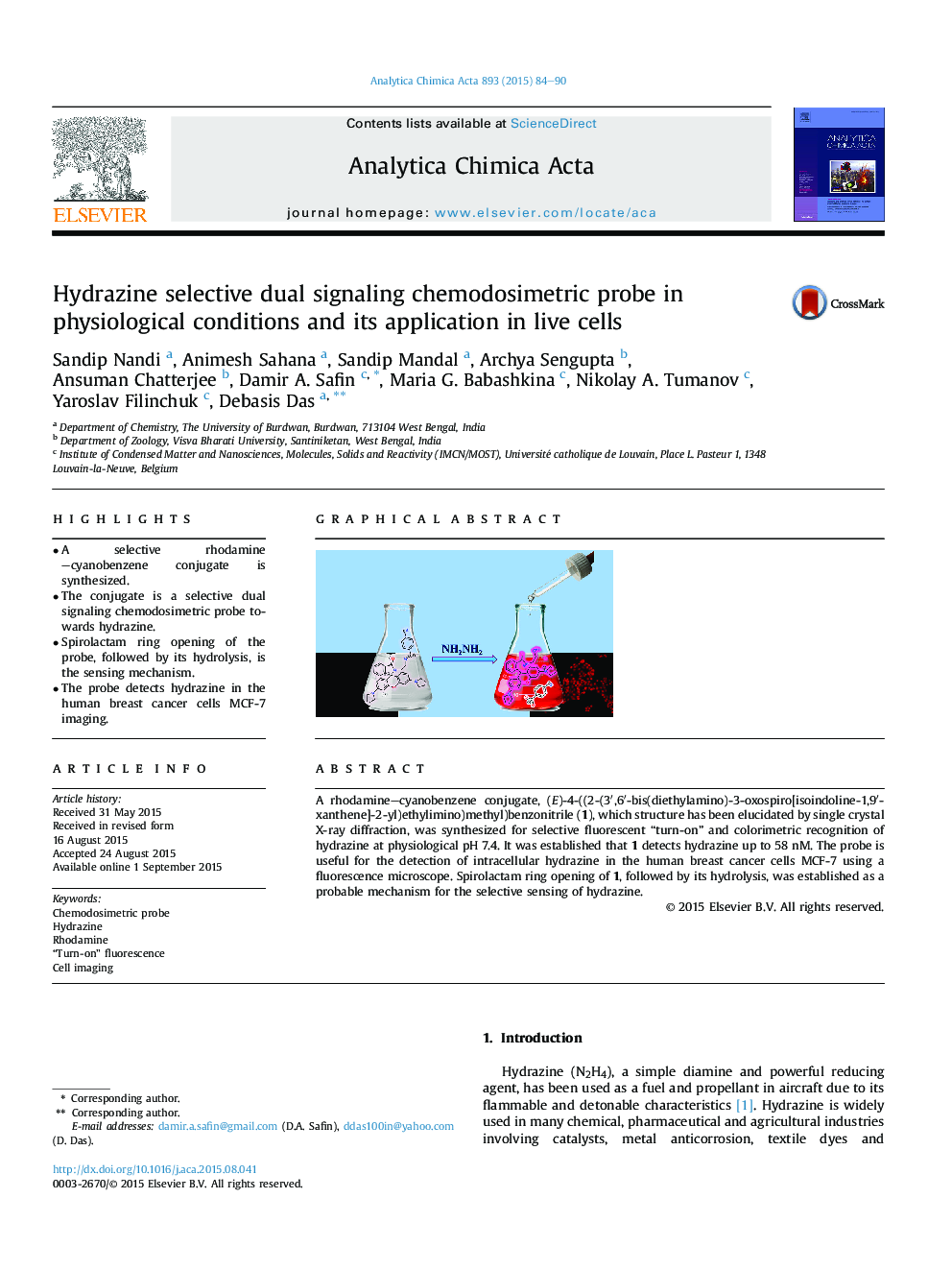| کد مقاله | کد نشریه | سال انتشار | مقاله انگلیسی | نسخه تمام متن |
|---|---|---|---|---|
| 1163337 | 1490939 | 2015 | 7 صفحه PDF | دانلود رایگان |
• A selective rhodamine–cyanobenzene conjugate is synthesized.
• The conjugate is a selective dual signaling chemodosimetric probe towards hydrazine.
• Spirolactam ring opening of the probe, followed by its hydrolysis, is the sensing mechanism.
• The probe detects hydrazine in the human breast cancer cells MCF-7 imaging.
A rhodamine–cyanobenzene conjugate, (E)-4-((2-(3′,6′-bis(diethylamino)-3-oxospiro[isoindoline-1,9′-xanthene]-2-yl)ethylimino)methyl)benzonitrile (1), which structure has been elucidated by single crystal X-ray diffraction, was synthesized for selective fluorescent “turn-on” and colorimetric recognition of hydrazine at physiological pH 7.4. It was established that 1 detects hydrazine up to 58 nM. The probe is useful for the detection of intracellular hydrazine in the human breast cancer cells MCF-7 using a fluorescence microscope. Spirolactam ring opening of 1, followed by its hydrolysis, was established as a probable mechanism for the selective sensing of hydrazine.
Figure optionsDownload as PowerPoint slide
Journal: Analytica Chimica Acta - Volume 893, 17 September 2015, Pages 84–90
